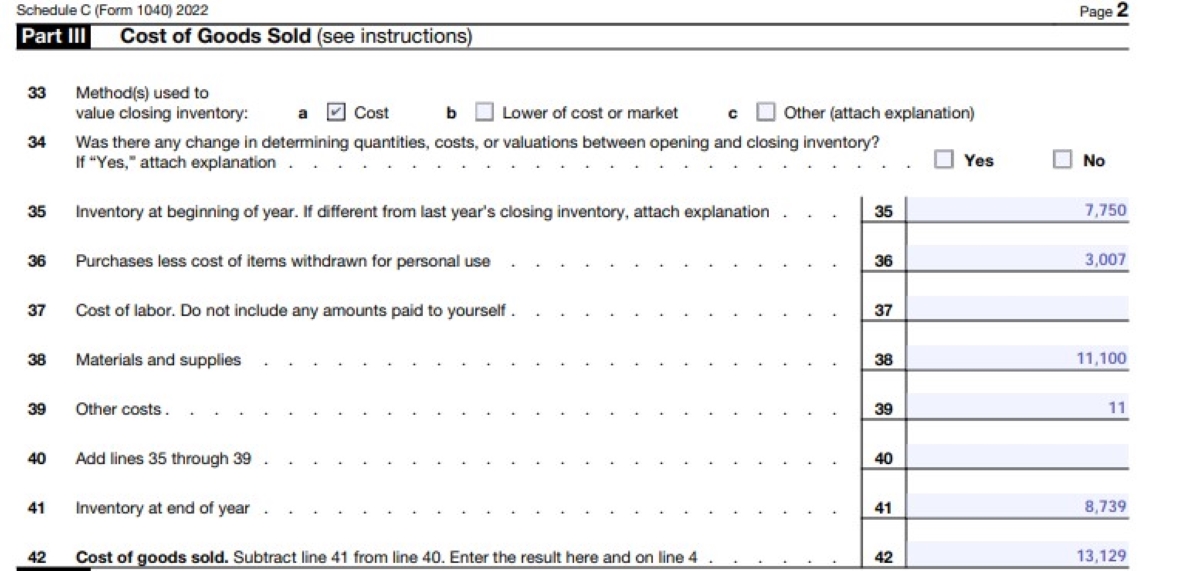

Finance
What Mutual Funds To Invest In 2015
Modified: December 30, 2023
Looking for the best mutual funds to invest in 2015? Get expert advice on finance and find the perfect funds to grow your wealth.
(Many of the links in this article redirect to a specific reviewed product. Your purchase of these products through affiliate links helps to generate commission for LiveWell, at no extra cost. Learn more)
Table of Contents
- Introduction
- Factors to Consider when Choosing Mutual Funds in 2015
- Top Mutual Fund Performers of 2014
- Sector-Specific Mutual Funds to Watch in 2015
- Gender-Lens Investing: What Mutual Funds are Taking the Lead?
- Emerging Market Mutual Funds for 2015
- Debt vs. Equity Mutual Funds: Making the Right Choice
- The Rise of Passive Investing: Index Funds to Consider in 2015
- How to Diversify Your Mutual Fund Portfolio in 2015
- Tips for Successful Mutual Fund Investing in 2015
- Conclusion
Introduction
When it comes to investing, mutual funds have long been a popular choice for both experienced investors and beginners alike. In 2015, navigating the world of mutual funds may seem like a daunting task, but with the right knowledge and guidance, you can make informed decisions that align with your financial goals.
One of the key factors to consider when choosing mutual funds in 2015 is market conditions. The global economy has undergone significant changes in recent years, and it is crucial to evaluate the current state of the market and how it may impact your investments. Factors such as interest rates, inflation, and geopolitical events can all influence the performance of mutual funds.
Another important consideration is the fund’s track record and performance. It is essential to analyze the fund’s historical returns and compare them to its benchmark index to assess its performance relative to the market. Additionally, evaluating the fund manager’s experience, expertise, and investment strategy can provide insight into its potential for success.
Furthermore, diversification is a key principle of successful investing. Allocating your investment across different asset classes, such as stocks, bonds, and cash equivalents, can help mitigate risk and maximize returns. Mutual funds provide access to a diversified portfolio of securities, making them an attractive option for investors looking to spread their investment across various industries and companies.
In this article, we will explore various aspects of mutual fund investing in 2015. We will examine the top-performing mutual funds of 2014, sector-specific funds to watch, gender-lens investing, emerging market opportunities, debt vs. equity funds, the rise of passive investing, and tips for successful mutual fund investing. By understanding these topics, you can make informed decisions and construct a well-balanced mutual fund portfolio that aligns with your financial goals and risk tolerance.
Factors to Consider when Choosing Mutual Funds in 2015
Investing in mutual funds requires careful consideration of various factors to ensure that your investment aligns with your financial goals and risk tolerance. In 2015, when navigating the mutual fund landscape, it is essential to keep these key factors in mind:
- Investment Objective: Consider your investment objective, whether it is capital appreciation, income generation, or a combination of both. Different mutual funds cater to different objectives, such as growth funds for capital appreciation or income funds for regular dividends.
- Risk Tolerance: Assess your risk tolerance level, as it will influence the type of funds you select. High-risk investors may opt for aggressive growth funds, while conservative investors may lean towards more stable and income-focused funds.
- Expense Ratio: Take into account the expense ratio, which reflects the fund’s annual operating expenses as a percentage of its assets. Lower expense ratios can contribute to higher returns, so it’s important to compare expense ratios among similar funds.
- Historical Performance: Evaluate the fund’s past performance and compare it to its benchmark index. Although past performance does not guarantee future results, it can provide insight into the fund’s consistency and ability to generate returns.
- Fund Manager: Assess the experience, expertise, and tenure of the fund manager. A skilled and experienced manager can add value and make prudent investment decisions to drive fund performance.
- Asset Allocation: Consider the fund’s asset allocation strategy, which determines the mix of stocks, bonds, and other securities. A well-diversified portfolio can help mitigate risk, while an overly concentrated portfolio can be more volatile.
- Fund Size: Examine the fund’s size, as it can impact the fund’s ability to execute its investment strategy. While larger funds may have more resources, smaller funds can be more nimble and potentially generate higher returns.
- Fund Turnover: Evaluate the fund’s turnover ratio, which indicates the frequency of buying and selling securities within the portfolio. A high turnover rate can lead to higher transaction costs and potentially impact returns.
- Tax Efficiency: Consider the fund’s tax efficiency, especially if you are investing in a taxable account. Funds with low turnover and minimal capital gains distributions can help minimize your tax liabilities.
By carefully considering these factors, you can make informed decisions when selecting mutual funds that align with your investment objectives, risk tolerance, and overall financial plan. It is also advisable to consult with a financial advisor who can provide personalized guidance based on your unique circumstances.
Top Mutual Fund Performers of 2014
Looking back at the performance of mutual funds in 2014 can provide valuable insights and guide your investment decisions in 2015. While past performance is not a guarantee of future results, it can give an indication of a fund’s ability to generate returns. Here are some of the top mutual fund performers of 2014:
- Vanguard Total Stock Market Index Fund: This fund, which seeks to track the performance of the overall U.S. stock market, delivered solid returns in 2014. It benefited from the strong performance of the U.S. equities market, particularly in the technology and healthcare sectors.
- Fidelity Contrafund: Managed by the renowned fund manager Will Danoff, the Fidelity Contrafund posted impressive gains in 2014. The fund focuses on large-cap stocks and has historically generated consistent returns by investing in companies with solid growth prospects.
- T. Rowe Price Dividend Growth Fund: This fund, as the name suggests, aims to invest in dividend-paying companies with potential for capital appreciation. In 2014, it delivered strong returns, benefiting from the performance of dividend stocks in a low-interest-rate environment.
- Dodge & Cox International Stock Fund: This fund focuses on international equities and had an exceptional year in 2014. It benefited from the rebound in global markets and had significant exposure to sectors such as finance and technology.
- PIMCO Total Return Fund: Managed by renowned bond investor Bill Gross, this fund focuses on fixed-income securities. Despite a challenging year for bonds, the PIMCO Total Return Fund outperformed many of its peers through tactical asset allocation and a focus on risk management.
It is important to note that while these funds performed well in 2014, their performance may vary in future market conditions. Therefore, it is advisable to conduct thorough research and assess the fund’s investment strategy, risk profile, and consistency of performance over multiple market cycles.
Additionally, individual investor goals and risk tolerance vary, so it is essential to consider your own investment objectives and consult with a financial advisor before making any investment decisions.
Sector-Specific Mutual Funds to Watch in 2015
Investing in sector-specific mutual funds provides an opportunity to focus on specific industries or sectors that show promising growth potential. While each sector carries its own set of risks and rewards, here are a few sector-specific mutual funds to watch in 2015:
- Technology Sector: The technology sector has consistently shown strong growth, driven by advancements in areas such as cloud computing, artificial intelligence, and e-commerce. Consider funds that have exposure to technology giants like Apple, Microsoft, and Amazon, as well as emerging tech companies.
- Healthcare Sector: With an aging population and increasing demand for healthcare services, the healthcare sector continues to be an attractive investment opportunity. Look for funds that invest in pharmaceutical companies, biotechnology firms, and healthcare service providers.
- Renewable Energy Sector: As the world becomes more focused on sustainable energy sources, the renewable energy sector is poised for significant growth. Consider funds that invest in solar, wind, and other clean energy companies, as well as related infrastructure and technology providers.
- Consumer Discretionary Sector: With an improving economy and growing consumer spending, the consumer discretionary sector offers opportunities for growth. Look for funds that focus on companies in industries such as retail, travel, leisure, and entertainment.
- Real Estate Sector: The real estate sector can provide stable income and potential for capital appreciation. Consider funds that invest in real estate investment trusts (REITs), which own and operate income-generating properties, such as residential, commercial, and industrial properties.
When evaluating sector-specific mutual funds, it is important to analyze the fund’s historical performance, expense ratio, asset allocation, and the overall outlook for the sector. Additionally, staying informed about industry trends, regulatory changes, and technological advancements can help you make more informed investment decisions.
However, it is crucial to diversify your portfolio and avoid concentration risk by not investing all of your assets in a single sector. Including a mix of sectors and asset classes can help spread risk and potentially enhance returns. Always consider your investment goals, risk tolerance, and consult with a financial advisor to determine the appropriate allocation within your portfolio.
Gender-Lens Investing: What Mutual Funds are Taking the Lead?
Gender-lens investing is a growing trend in the investment world, aiming to promote gender equality and empower women through investment strategies. This approach incorporates gender-related factors into the investment process, such as supporting companies with diverse leadership teams, promoting workplace equality, and addressing gender-related challenges.
While gender-lens investing is still relatively new, several mutual funds have emerged that prioritize this approach. These funds seek to not only generate financial returns but also create a positive social impact by addressing gender disparities. Here are a few mutual funds that are leading the way in gender-lens investing:
- Pax Ellevate Global Women’s Leadership Fund: This fund focuses on investing in companies that have a strong commitment to gender diversity, including those with women in leadership positions. It seeks to promote gender equality while aiming for long-term capital appreciation.
- Impact Shares YWCA Women’s Empowerment ETF: As an exchange-traded fund (ETF), this fund provides investors with exposure to companies that support women’s empowerment. It selects companies based on gender equality principles, including workplace policies, diversity initiatives, and community impact.
- Barclays Women in Leadership Exchange Traded Notes: This ETN offers investors exposure to U.S. listed companies with a significant proportion of women in senior leadership roles. It aims to track an index composed of companies that exhibit gender diversity within their leadership teams.
- Morgan Stanley Parity Portfolio: This portfolio focuses on companies that demonstrate a commitment to gender diversity and inclusion. It seeks to invest in companies with gender-diverse boards and leadership teams, as well as those that provide products or services that specifically benefit women.
- Calvert Women’s Principles ESG Equity Fund: This fund considers environmental, social, and governance (ESG) criteria, with a specific focus on gender. It seeks to invest in companies that promote gender equality, workplace diversity, and women’s empowerment, while also aiming for strong financial performance.
These mutual funds not only provide investors with the potential for financial returns but also align with their values by supporting gender equality and women’s empowerment. However, it is important to conduct thorough research and ensure that the investment strategy of these funds aligns with your own investment objectives and risk tolerance.
Investing in gender-lens funds can be a way to not only grow your wealth but also make a positive impact on society. By encouraging companies to prioritize gender diversity, these funds contribute to a more equitable and inclusive corporate landscape.
Before making any investment decisions, it is advisable to consult with a financial advisor who can provide personalized advice based on your individual circumstances and preferences.
Emerging Market Mutual Funds for 2015
Emerging markets offer investors the potential for high growth and diversification opportunities. As economies continue to develop and evolve, investing in emerging market mutual funds can be an attractive option for those seeking to capitalize on these opportunities. Here are some emerging market mutual funds to consider for 2015:
- iShares MSCI Emerging Markets ETF: This exchange-traded fund (ETF) aims to track the performance of the MSCI Emerging Markets Index. It provides investors with exposure to a broad range of emerging market companies across various sectors.
- Fidelity Emerging Markets Fund: Managed by experienced portfolio managers, this fund seeks to invest in companies with significant operations or business interests in emerging markets. It focuses on both large-cap and mid-cap equities to capture growth opportunities in these regions.
- Vanguard Emerging Markets Stock Index Fund: This fund aims to track the performance of the FTSE Emerging Markets All Cap China A Inclusion Index. It provides exposure to a diversified portfolio of companies in emerging markets, including China, Brazil, India, and other countries.
- T. Rowe Price Emerging Markets Stock Fund: This fund focuses on investing in companies in emerging markets that demonstrate strong growth potential and competitive advantages. It utilizes a bottom-up approach to stock selection and emphasizes long-term capital appreciation.
- Templeton Emerging Markets Fund: Managed by Franklin Templeton Investments, this fund has a long history of investing in emerging markets. It leverages extensive research and on-the-ground expertise to identify compelling investment opportunities across emerging market countries and sectors.
While investing in emerging markets can offer appealing growth prospects, it is important to be aware of the associated risks. These can include political instability, currency fluctuations, regulatory changes, and liquidity constraints. Therefore, it is crucial to carefully evaluate the fund’s investment strategy, risk management approach, and track record in navigating these challenges.
Additionally, diversification is key when investing in emerging markets. It is advisable to combine exposure to emerging markets with investments in developed economies to mitigate risk and enhance portfolio stability. Consulting with a financial advisor can help you determine the appropriate allocation to emerging market mutual funds based on your risk tolerance and investment goals.
Keep in mind that while emerging markets can offer attractive investment opportunities, they can also be volatile and subject to economic and political shifts. Conduct thorough research and stay informed about the latest news and developments in the countries and regions where you are considering investing.
Debt vs. Equity Mutual Funds: Making the Right Choice
When considering mutual funds, one of the key decisions investors face is whether to choose debt or equity funds. Debt funds primarily invest in fixed-income securities, such as bonds, while equity funds primarily invest in stocks. Understanding the differences between these two types of funds can help you make the right choice based on your investment goals, risk tolerance, and market conditions.
Debt Mutual Funds:
Debt mutual funds focus on generating income through interest payments from fixed-income securities. These funds invest in government bonds, corporate bonds, and other debt instruments. Here are some key characteristics of debt mutual funds:
- Income Generation: Debt funds emphasize generating regular income for investors through interest payments.
- Lower Risk: Debt funds are generally considered lower risk compared to equity funds, as they offer more predictable returns and are less influenced by market volatility.
- Fixed Returns: Debt funds offer relatively stable returns as they are based on the interest rates and coupon payments of the underlying securities.
- Lower Potential for Capital Appreciation: Debt funds typically have lower potential for capital appreciation compared to equity funds.
- Short to Long Duration: Debt funds may have different durations, ranging from short-term (less than one year) to long-term (multiple years).
Equity Mutual Funds:
Equity mutual funds focus on investing in stocks or equities of different companies. These funds aim for long-term capital appreciation by taking advantage of growth opportunities in the stock market. Here are some key characteristics of equity mutual funds:
- Capital Appreciation: Equity funds have the potential for higher returns through capital appreciation as the value of the underlying stocks increases over time.
- Higher Risk: Equity funds are generally considered riskier than debt funds, as stock prices can be more volatile and influenced by market conditions and company-specific factors.
- Long-Term Investment Horizon: Equity funds are suitable for investors with a long-term investment horizon, as short-term market fluctuations may not significantly impact their overall returns.
- Dividend Income: Some equity funds also offer dividend income, as companies distribute a portion of their profits to shareholders.
- Diversification: Equity funds provide diversification by investing in a portfolio of stocks across different sectors and industries.
When choosing between debt and equity mutual funds, it is essential to assess your risk tolerance, investment goals, and time horizon. If you prioritize stable income and lower risk, debt funds may be more suitable. On the other hand, if you are willing to take on higher risk for the potential of long-term capital appreciation, equity funds may be the preferred choice.
Some investors adopt a balanced approach and allocate their investments to a combination of debt and equity funds to diversify their portfolios. In this way, they can benefit from both income generation and capital appreciation while managing risk.
It is recommended to consult with a financial advisor who can evaluate your individual circumstances, investment goals, and risk tolerance to help you make the right choice between debt and equity mutual funds.
The Rise of Passive Investing: Index Funds to Consider in 2015
Passive investing, particularly through index funds, has gained significant popularity in recent years. These funds aim to replicate the performance of a specific market index, such as the S&P 500 or the FTSE 100, rather than actively selecting individual stocks. This approach has gained traction due to its simplicity, lower fees, and potential for consistent returns. Here are some index funds to consider in 2015:
- Vanguard 500 Index Fund: This fund seeks to track the performance of the S&P 500 index, which is composed of 500 of the largest U.S. companies. It provides investors with broad exposure to the U.S. stock market and historically has had low expense ratios.
- iShares Core S&P 500 ETF: As an exchange-traded fund (ETF), this fund offers investors exposure to the performance of the S&P 500 index. It provides a cost-effective way to invest in the largest U.S. companies and is traded on stock exchanges like individual stocks.
- Schwab Total Stock Market Index Fund: This fund seeks to track the performance of the Dow Jones U.S. Total Stock Market Index. It offers investors exposure to the entire U.S. stock market, including large-cap, mid-cap, and small-cap stocks, providing a diversified investment option.
- iShares MSCI All Country World Index ETF: This global ETF tracks the performance of the MSCI All Country World Index, which includes stocks from both developed and emerging markets. It provides investors with exposure to a broad range of companies globally, making it a convenient way to diversify internationally.
- SPDR S&P 500 ETF Trust: Another ETF that tracks the performance of the S&P 500 index, this fund offers investors low-cost access to the U.S. equity market. It provides broad exposure to large-cap U.S. companies across various sectors.
Index funds offer several advantages for investors. They typically have lower expense ratios compared to actively managed funds since they do not require extensive research and analysis by fund managers. Additionally, they provide instant diversification across a broad range of stocks or markets, which can help reduce risk. The passive nature of index funds also means they have the potential to consistently match the performance of the underlying index.
When considering index funds for your portfolio, it is important to evaluate the fund’s tracking error, which measures the consistency of the fund’s performance relative to the index it follows. A lower tracking error indicates a closer alignment with the index’s returns.
However, it is important to note that while index funds offer simplicity and cost-efficiency, they may not outperform actively managed funds in certain market conditions. Additionally, index funds are subject to market fluctuations and cannot consistently outperform the index they track.
Before investing in index funds, consider your investment goals, risk tolerance, and time horizon. It is advisable to consult with a financial advisor who can guide you on the appropriate allocation within your portfolio and help you make informed decisions based on your individual circumstances.
How to Diversify Your Mutual Fund Portfolio in 2015
Diversification is a fundamental principle of successful investing. By spreading your investments across different assets, sectors, and geographies, you can reduce risk and potentially enhance returns. Here are some strategies to diversify your mutual fund portfolio in 2015:
- Asset Class Diversification: Allocate your investments across different asset classes, such as stocks, bonds, and cash equivalents. Each asset class behaves differently in various market conditions, so diversifying across these can help balance your portfolio and mitigate risk.
- Geographic Diversification: Invest in mutual funds that provide exposure to different regions and countries. Economic conditions can vary across geographies, so spreading your investments globally can help protect your portfolio from the impact of regional economic fluctuations.
- Sector Diversification: Consider investing in mutual funds that focus on different sectors and industries. Industries perform differently at different points in the economic cycle, so having exposure to a variety of sectors can help offset any underperformance in one area.
- Market Cap Diversification: Include mutual funds that invest in companies of different market capitalizations, such as large-cap, mid-cap, and small-cap stocks. This diversification can provide access to companies at various stages of growth and potentially enhance your overall returns.
- Style Diversification: Incorporate mutual funds with different investment styles. Growth funds focus on companies expected to have above-average growth, while value funds look for undervalued stocks. Having a mix of both can help balance your portfolio and capture various market opportunities.
When diversifying your mutual fund portfolio, it is important to evaluate the correlation between the funds. Correlation measures how closely the returns of two funds move in relation to each other. Ideally, you want to select funds with low correlation to achieve true diversification. This means that when one fund’s performance is down, another fund’s performance may be up, balancing out your overall portfolio returns.
Regularly reviewing and rebalancing your portfolio is crucial to maintaining diversification. Over time, certain funds may outperform or underperform, altering the balance of your portfolio. By rebalancing, you can sell off some portions of your holdings that have grown and reinvest in areas that may be underrepresented in your portfolio.
Keep in mind that diversification does not guarantee profits or protect against loss, but it can help manage risk in an uncertain market. Before making any investment decisions, consider your investment goals, risk tolerance, and consult with a financial advisor who can provide personalized guidance based on your individual circumstances.
Tips for Successful Mutual Fund Investing in 2015
Investing in mutual funds can be a smart strategy for building wealth and achieving your financial goals. To make the most of your mutual fund investments in 2015, consider the following tips:
- Clearly Define Your Financial Goals: Determine your investment objectives and the timeframe for achieving them. Are you investing for retirement, a down payment on a house, or education expenses? Having clear goals will help you choose the right mutual funds for your needs.
- Do Your Homework: Research and analyze different mutual funds before investing. Consider factors such as historical performance, expense ratios, fund managers’ experience, and the fund’s investment strategy. Look for consistency in performance over multiple market cycles.
- Understand Risk and Reward: Consider your risk tolerance when selecting mutual funds. Higher-risk funds may offer the potential for higher returns, but they also come with greater volatility. Choose funds that align with your risk tolerance and investment objectives.
- Review and Diversify Your Portfolio: Regularly assess your mutual fund holdings to ensure they align with your goals. Aim for diversification across asset classes, sectors, and geographies to spread risk and capture different opportunities. Rebalance your portfolio periodically to maintain the desired asset allocation.
- Be Mindful of Fees: Pay attention to expense ratios and any additional fees associated with mutual funds. Minimizing fees can have a significant impact on your investment returns over the long term. Look for funds with low expense ratios and no-load funds to avoid upfront sales charges.
- Take a Long-Term Approach: Mutual funds are designed for long-term investing. Avoid making impulsive decisions based on short-term market fluctuations. Stay focused on your investment strategy and resist the urge to constantly buy or sell based on market noise.
- Stay Informed: Keep yourself updated on market trends, economic indicators, and any regulatory changes that may impact your mutual fund investments. Stay connected with financial news, read fund prospectuses, and consider seeking guidance from a trusted financial advisor.
- Monitor Tax Implications: Be mindful of the tax implications of your mutual fund investments. Understand how different funds distribute capital gains and dividends, as well as any potential tax benefits or implications for your specific tax situation.
- Don’t Let Fear or Greed Drive Decisions: Emotions such as fear and greed can lead to poor investment decisions. Avoid succumbing to market hype or panic selling during market downturns. Stick to your investment plan and make decisions based on sound analysis and long-term goals.
- Regularly Review Your Strategy: Schedule periodic reviews of your mutual fund portfolio to assess its performance and make any necessary adjustments. As your circumstances and goals change, your investment strategy may need to evolve as well.
Remember that investing in mutual funds involves risk, and there are no guarantees of returns. It is important to conduct thorough research, diversify your investments, and carefully consider your goals and risk tolerance before making any investment decisions. If you are uncertain or need personalized advice, consult with a qualified financial advisor who can provide guidance tailored to your individual circumstances.
Conclusion
As you navigate the world of mutual funds in 2015, it is important to consider various factors that can influence your investment decisions. Factors such as market conditions, investment objectives, risk tolerance, and fund performance should all be carefully evaluated. By making informed choices and diversifying your portfolio, you can position yourself for successful mutual fund investing.
Consider the top mutual fund performers of 2014, sector-specific funds, gender-lens investing, emerging market opportunities, debt vs. equity funds, and the rise of passive investing. Each of these areas presents unique opportunities and considerations that can help shape your investment strategy in 2015.
Remember, successful mutual fund investing is a long-term endeavor. It requires discipline, research, and regular monitoring of your portfolio. Stay informed, review your goals periodically, and make adjustments as needed to stay on track.
Lastly, keep in mind that investing in mutual funds involves risk, and past performance is not indicative of future results. It is important to conduct your own due diligence, seek expert advice when needed, and align your investments with your personal financial goals and risk tolerance.
By employing these strategies and staying focused on your goals, you can navigate the mutual fund landscape with confidence and potentially achieve your desired financial outcomes.














